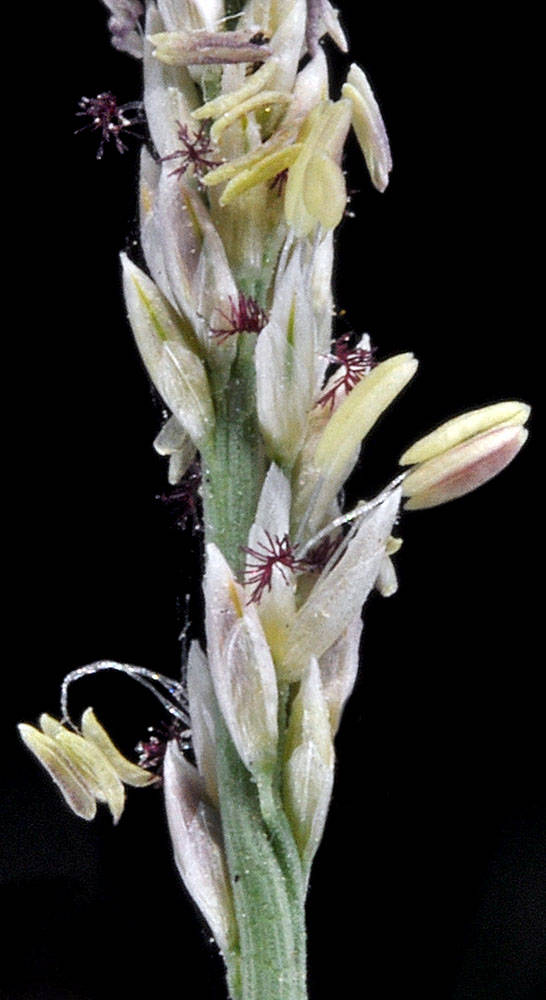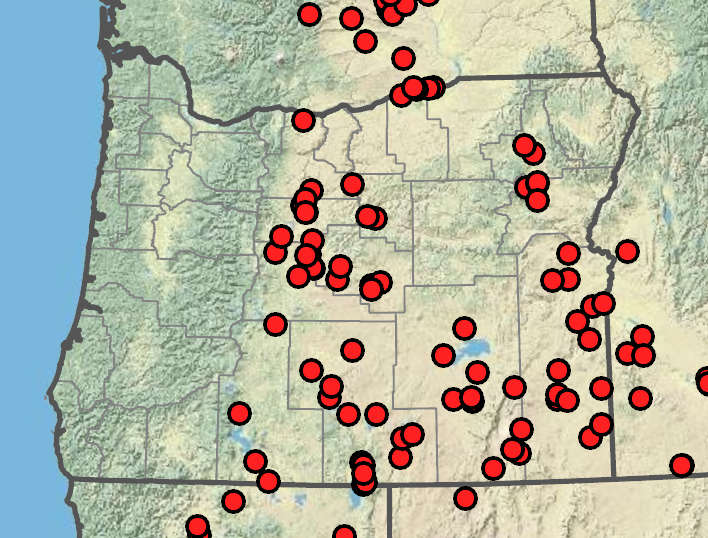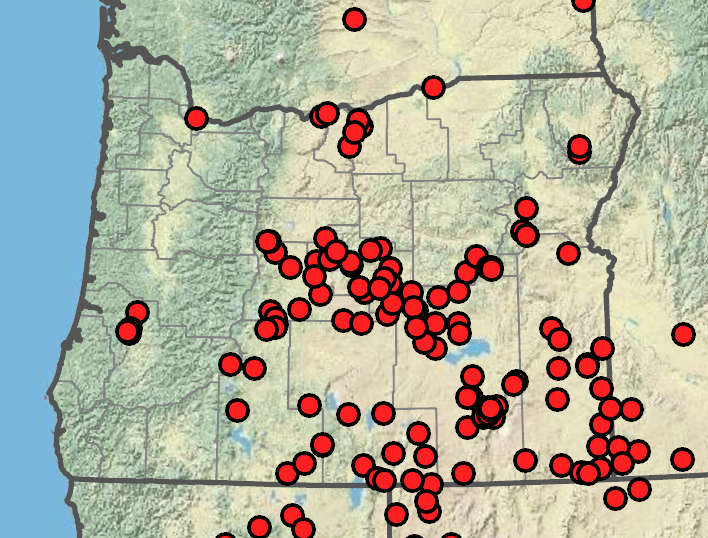Muhlenbergia asperifolia
Muhlenbergia richardsonis
alkali muhly, scratchgrass
mat muhly
with bases somewhat compressed-keeled;
internodes glabrous; shiny below the nodes.
0.4–1 mm thick;
internodes usually nodulose for most of their length, puberulent or nodulose below the nodes.
blades 2–7(11) cm × 1–2.8(4)mm; flat, occasionally conduplicate;
lower surface smooth or minutely scabrous;
upper surface minutely scabrous;
margins and midveins not conspicuously thickened; greenish;
tips acute.
blades 0.4–6.5 cm × 0.5–4.2 mm; flat or involute; straight or curving; lower/outer surface glabrous; upper/inner surface minutely hairy.
6–21 × 4–16 cm, broadly ovoid; open;
branches whitish;
primary branches 3–12 cm × 0.05–0.1 mm; capillary; lower branches spreading, not appearing clustered;
pedicels 3–14 mm; longer than the spikelets.
spike-like, 1–1.5 × 0.1–1.7 cm; inflorescence axes usually concealed by the branches;
primary branches 0.4–5 cm × over 0.1 mm thick, usually closely appressed at maturity, rarely diverging up to 20° from the inflorescence axes;
pedicels 0.2–2 mm.
1.2–2.1 mm.
1.7– 3.1 mm.
equal, 0.6–1.7 mm, 1-veined; purplish, minutely scabrous particularly on the veins;
tips acute.
subequal, 0.6–2 mm, 33–50% as long as the lemmas, green, 1(2)-veined; acute, sometimes with short points less than 0.2 mm;
tips acute, sometimes mucronate.
1.2–2.1 mm, lanceolate to oblong-elliptic; somewhat gray, glabrous; smooth, occasionally minutely scabrous near the tips;
tips acute; awnless or mucronate; the mucros to 0.3 mm.
1.7–3.1 mm, lanceolate; dark greenish, gray or mottled, glabrous;
tips minutely scabrous; acute to acuminate, sometimes mucronate; mucros to 0.5 mm.
1–1.3 mm; greenish yellow to purplish at maturity.
0.9–1.6 mm, yellow to purplish.
=20, 22, 28.
=40.
Muhlenbergia asperifolia
Muhlenbergia richardsonis
Moist, alkaline meadows. 100–1500m. BR, BW, Col, ECas, Lava, Owy. CA, ID, NV, WA; north to British Columbia, northeast to Ontario, southeast to TX, south to Mexico. Native.
Seasonally moist alkaline meadows, river banks. 50–2700m. BR, BW, Casc, Col, CR, ECas, Lava, Owy, WV. CA, ID, NV, WA; north to Yukon, east to Nova Scotia, south to northern Mexico. Native.
Muhlenbergia richardsonis is a small rhizomatous perennial with narrow purplish inflorescences much like those of M. filiformis. The nodulose culms are unique among Oregon grasses when present but can be hard to see. Young M. richardsonis culms are green with slightly thickened, straw-colored ribs; older culms are straw-colored throughout. The nodules are similar in thickness and color to the ribs but extend across the space between the ribs. Occasional M. richardsonis that lack the nodules can be difficult to distinguish from M. filiformis, an annual that has culms glabrous even below the nodes and glumes erose and rounded to subacute. Muhlenbergia richardsonis populations increase under heavy grazing.
Barbara Wilson, Richard Brainerd, Nick Otting
Barbara Wilson, Richard Brainerd, Nick Otting
- Local floras:
BC,
CA,
OR,
WA
- Local Web sites:
CalFlora,
CalPhotos,
Flora NW,
PNW Herbaria
WildflowerSearch
iNaturalist (observations)
USDA Plants Database
- LBJ Wildflower Center
- SEINet
- Plants of the World Online
- Encyclopedia of Life
- Wikipedia
- Google Image Search
- Local floras:
BC,
CA,
OR,
WA
- Local Web sites:
CalFlora,
CalPhotos,
Flora NW,
PNW Herbaria
WildflowerSearch
iNaturalist (observations)
USDA Plants Database
- LBJ Wildflower Center
- SEINet
- Plants of the World Online
- Encyclopedia of Life
- Wikipedia
- Google Image Search





